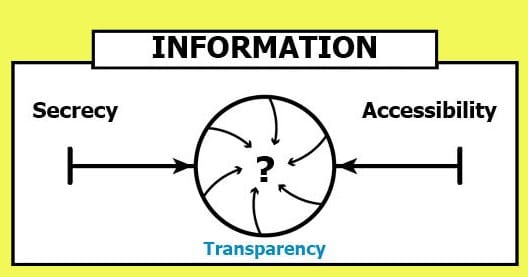Last week I committed to writing about the global trends futurists consider when studying humanities’ ways of seeing and being in the world. For each global trend, we look for its pattern of behaviour as well as its anticipated direction over time. The assumption being that with this “predictive” power, we make better-informed choices regarding our immediate and future actions.
As I stated in an earlier blog on motivation, historically, society had time between shifting patterns or paradigms to recognize and experience both ends of the continuum as we collectively transitioned from one to the other. Thus, at a certain point in time we found ourselves in either one paradigm or the other (Either/Or). Today, the transition time between paradigms is significantly shorter due to the accelerated pace of change, and we find ourselves paradoxically with a foot in both ends of the continuum (Both/And).
In the case of this week’s global trend – information – we might describe its pattern or paradigm during the 1970s as secrecy (“The Conspiracy of Silence”). An illustration of this secrecy occurred for me as a Planned Parenthood volunteer. My job was to provide services, information and counseling on sexual and reproductive health issues to adolescents. However, over 80% of public schools during this era refused to allow “sex education” to be taught as part of the curriculum. Herein lies the conspiracy of silence. The silently held belief of the day was, “if we don’t talk about sex, then they (teenagers) won’t do it.”
Over the last 40 years society began to shift along the information continuum away from the paradigm of secrecy. I might suggest that shift was toward accessibility. A current example of accessibility as an evolved paradigm appeared today in international news — cell phone photographs placed on the internet have a GPS marker (longitude and latitude) indicating a near-to-exact photo location. This is just one of many privacy concerns arising as a result of widespread access to digital information technologies.
So where do we currently find ourselves on the information continuum? It appears to be a Both/And paradox — one foot in the lingering echo of secrecy and the other foot in its counter-paradigm, accessibility. As I indicated last week, while paradigms allow us to choose between Either/Or, paradoxes present us with contradictions creating a state of inner conflict and inconsistency. Our instinct to resolve inner conflict presses us to some form of convergence between these two paradigms.
I suggest the emerging information convergence might be “transparency”. One illustration might be Julian Assange’s WikiLeaks exposés where, as citizens, we are pulled between government secrecy regarding international affairs and public demands to know how those policies are enacted. A second example of transparency might be “open source” software – designed, developed and made available to all at no cost.
In the spirit of collaboration, I ask, “Do you agree with our information paradigms of secrecy and accessibility? If no, what do you feel are the two paradigms? If you agree, what do you see as their convergence?





